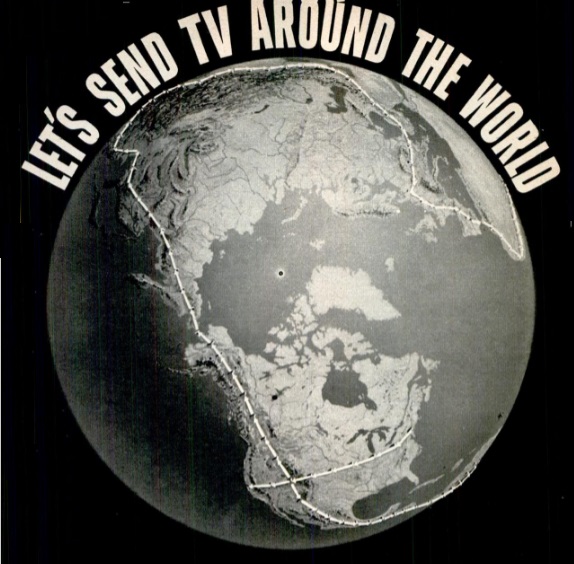 Seventy years ago this month, the December 1951 issue of Popular Mechanics carried a feature with the byline of RCA Chairman of the Board David Sarnoff discussing the prospects of international television. He predicted that before long, viewers would be able to bring exciting events from distant lands to their armchairs with a flick of the dial, all at the instant they’re taking place.
Seventy years ago this month, the December 1951 issue of Popular Mechanics carried a feature with the byline of RCA Chairman of the Board David Sarnoff discussing the prospects of international television. He predicted that before long, viewers would be able to bring exciting events from distant lands to their armchairs with a flick of the dial, all at the instant they’re taking place.
He outlined the ways this might happen, but interestingly, he fails to mention the technology that did make it happen, namely orbiting satellites.
His most promising idea is shown above, namely a network of microwave relays about 20-50 miles apart. This network was already taking shape in the US, and Sarnoff pointed out that it could easily be expanded from Patagonia to Alaska. And since it was only 40 miles acroos the Bering Strait, there was no technological reason why the network couldn’t be thus extended into Eurasia, and from there to Africa. He notes that there were plans for a telegraph land line along the same route 90 years earlier, which was abandoned only after the success of the transatlantic telegraph cable.
Another idea for connecting America and Europe was a string of artificial islands in the Atlantic, 200 miles apart, each with a 1000 foot tower.
We’ve previously mentioned the idea of stratovision, namely, using aircraft both to broadcast and relay programs. Sarnoff hinted at a possible expansion of this system to link America and Europe. He noted that there were already enough commercial flights flying the route, and that if these planes were fitted with television relays, they could provide a permanent microwave link across the Atlantic.
